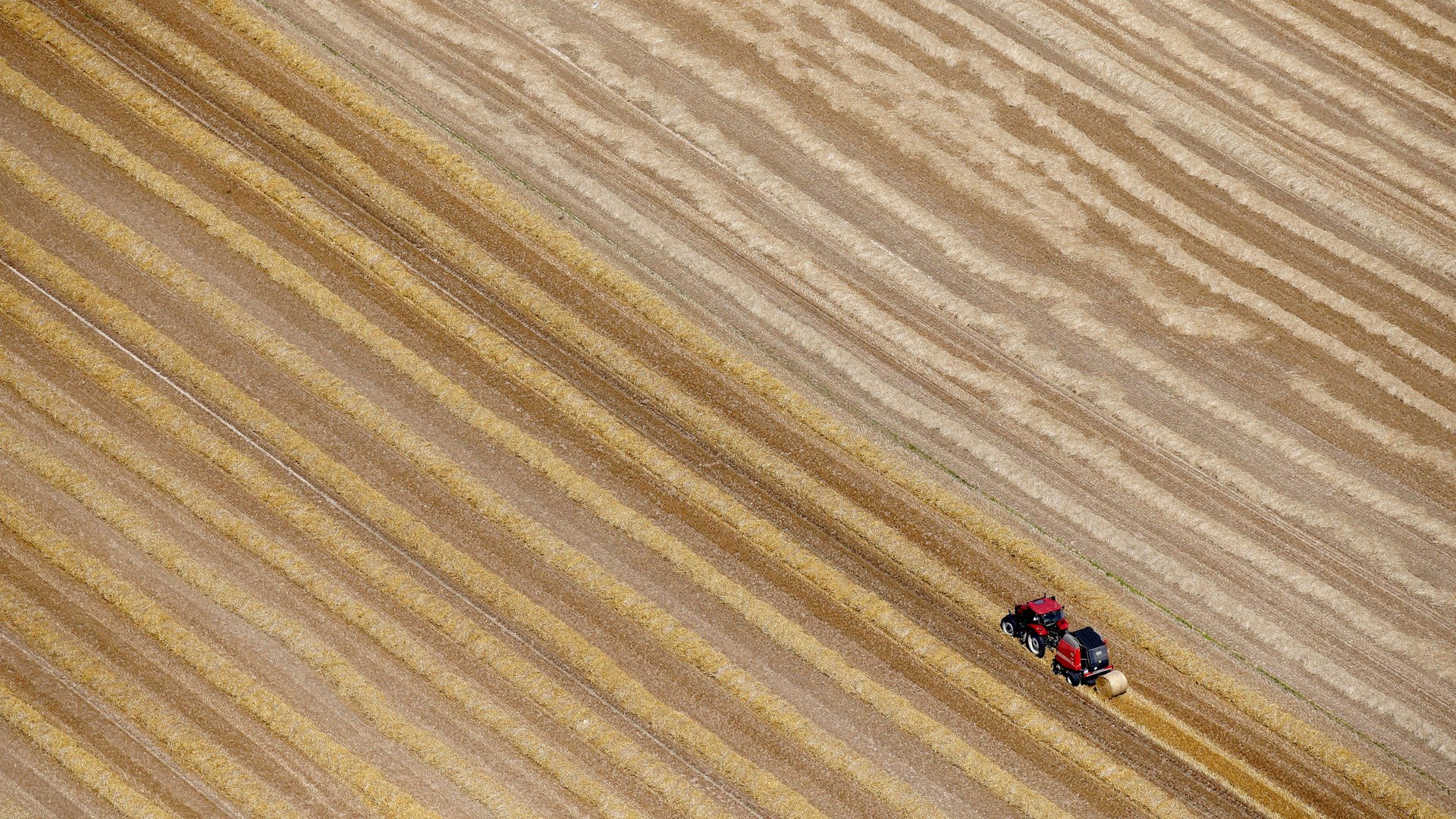The amount of American land used to grow wheat is at the lowest in almost a century
The number of acres on which US farmers grow wheat has hit its lowest point since the government first began recording such data in 1919.


The number of acres on which US farmers grow wheat has hit its lowest point since the government first began recording such data in 1919.
Wheat acreage decreased by more than 40% since 1919 to about 46 million—but the amount of wheat produced per acre has increased nearly 267%. The decline is indicative of just how good American farmers have gotten at growing more wheat with less space. But in order to ensure the country will have a healthy inventory of wheat to use and export, farmers will have to maintain or increase acreage, according to agricultural analysts at Rabobank.
That stabilization is going to be important, as traders believe intense drought will have an acute impact on crops, and will eventually make American wheat less competitive in the global export markets, according to Bloomberg. In the last three months, the price of a bushel of wheat has seen a big uptick.
Wheat yields have been below trend for 18 of the last 31 years—and 20% of the time the cause has been weather related, driving production as low as 15% beneath the average. “The decreased number of acres being planted may begin causing a domino effect down the supply chain,” according to a Rabobank statement. “Fewer acres leads to less supply, which leads to increased imports that raise the price of the raw goods. The result is, in the end, a more expensive consumer good.”
The US is the world’s top wheat exporter, and the hardest-hit variety of wheat has been a kind known as “hard red winter wheat,” which is the type from which most bread flours are produced. It’s tough to say just how bad retail prices could be hit, but it would add more to the wholesale costs of baked goods, pasta, and cereals.